Adopt a Rescued Elephant at the Sheldrick Wildlife Trust
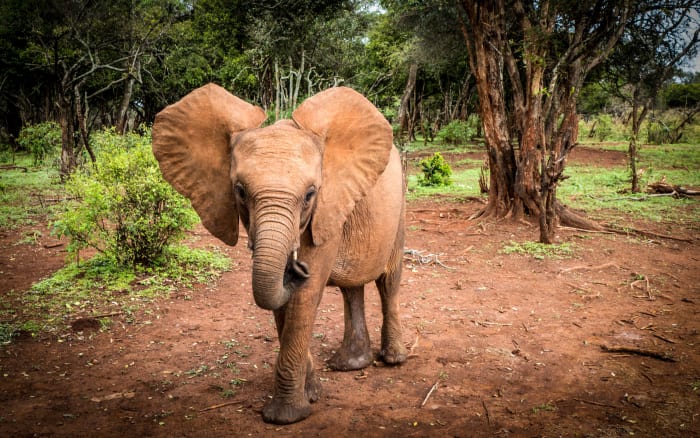
Courtesy of Sheldrick Wildlife Trust
MORE KENYA: HEMINGWAYS OL SEKI | HEMINGWAYS NAIROBI | HEMINGWAYS WATAMU | KENYA | KENYA AIRWAYS | RAFFY, SAFARI GUIDE | ECOWORLD RECYCLING | HEMINGWAYS EXPEDITIONS
The David Sheldrick Wildlife Trust, known as Sheldrick Wildlife Trust (SWT), is one of East Africa’s pioneering conservation organizations that has worked for the protection and conservation of wildlife and wild habitats in Kenya for over 40 years.
Working with local partners, including the Kenya Wildlife Service, in areas where wildlife and ecosystems face existential threats, the not-for-profit organization implements innovative and proven solutions to tackle wildlife poaching, human-wildlife conflict, habitat destruction and drought.
The Sheldrick Wildlife Trust is best known for its work in the rescue and rehabilitation of orphaned elephants, being the first organization in the world to successfully hand-raise, orphaned milk-dependent elephants and reintegrate them back into the wild through its Orphans’ Project.
We spoke with Sheldrick Wildlife Trust to learn more about the work they do each day!
FAQs
Everything you need to know about the Sheldrick Wildlife Trust.
Where is the Sheldrick Wildlife Trust located?
The Sheldrick Wildlife Trust is located in Kenya, East Africa. The Trust's main base, being the location of our elephant orphanage, often referred to as the Nairobi Nursery, is in Nairobi National Park. Our three Reintegration Units are located in the Greater Tsavo Conservation Area, with Voi and Ithumba in Tsavo East National Park and Umani Springs in the Kibwezi Forest.
What kind of work does the Sheldrick Wildlife Trust do?
The Sheldrick Wildlife Trust operates the most successful orphan elephant rescue and rehabilitation program in the world. But we do much more than this. We work across Kenya, our projects include antipoaching safeguarding the natural environment, enhancing community awareness, addressing animal welfare issues, providing veterinary assistance to animals in need, rescuing and hand-rearing elephant and rhino orphans, along with other species that can ultimately enjoy a quality of life in the wild when grown.
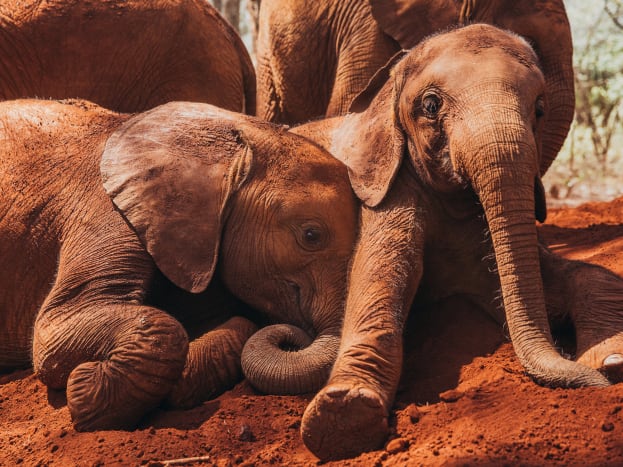
1 / 3
How the Sheldrick Wildlife Trust got started rescuing elephants and animals in the wild?
Founded in 1977 by Dr. Dame Daphne Sheldrick DBE, in memory of her late husband, famous naturalist and founding Warden of Tsavo East National Park, David Leslie William Sheldrick MBE, the Sheldrick Wildlife Trust claims deeply rooted family history in wildlife and conservation. For more than 25 years, the Kenya-born Daphne Sheldrick lived and worked alongside David, during which time they raised and successfully rehabilitated many wild species. Daphne Sheldrick’s involvement with wildlife spanned a lifetime, and she was a recognized international authority on the rearing of wild creatures and was the first person to perfect the milk formula and husbandry needed to successfully raise infant milk-dependent elephants and rhinos.
What kind of animals does the Sheldrick Wildlife Trust rescue?
We rescue all manner of wild species ranging from orphan giraffes to buffalos, elephants to antelopes and rhinos. In the past, we have also hand-raised ostriches and an orphan hippo.
Where do you find most of your rescues?
We find out rescues across Kenya – an interactive map of orphan-rescue locations can be found here: https://www.sheldrickwildlifetrust.org/projects/orphans/rescue-map.
How long do they stay in your care?
It can depend on the orphan, its personality and age at rescue but generally speaking, orphans remain in our care for up to 10 years before they are ready to reintegrate into the wild and live an independent life.
How many elephants are currently part of the Sheldrick Wildlife Trust?
There are currently 87 milk-dependent orphans in our care. We are protecting an additional 144 wild living orphans (orphans that have returned to the wild) through our wildlife protection projects .

1 / 3
Could you share one of their stories?
Lualeni’s story is a wonderful example of the success we have had raising orphans back to a life in the wild, where some have even become mothers: https://www.sheldrickwildlifetrust.org/news/updates/lualeni-gives-birth.
How many elephants do you rescue per year?
This varies massively for a variety of reasons. We have seen peaks in some years due to drought, flood, poaching, etc., all of which can result in the mother's dying or being killed and where an orphan infant is identified and reported, we will respond. Looking at rescues in the last five years, where the rescued infant has survived for more than one year – tragically, we cannot save them all, as some orphans arrive in a truly terrible condition due to injuries, and even their emotional state. Additionally, in 2017 another orphanage was founded in northern Kenya and a number of infants rescued in that specific region have gone there. In 2018 we rescued seven orphan elephants, in 2017 we rescued 16 orphan elephants in 2016 it was 18 orphans in 2015 we rescued 12 orphans and in 2014 the number of successful rescues stood at 14.
What is something everyone should know about taking care of rescue animals?
Rescue animals are sentient beings that need love, kindness and respect. Obviously the care of a rescued cat or dog varies considerably to that of a wild animal, as with the former you are seeking to provide them with a loving home for life. Our role in the rescue of wild orphans is to provide them with the protection and care they need to thrive so that when they are grown they can return to a life in the wild, were they belong. They are essentially only on loan to us for as long as they need our help.
Am I able to interact with a baby elephant at the Sheldrick Wildlife Trust?
Interacting with the orphans is not what we are about. While it might occur when a foster parent comes to our 5 p.m. foster parent visit – the elephants return from the bush to their stables for the night and foster parents are able to witness this and then spend a short time observing the elephants, who might choose to stick a trunk out of a stable door – the purpose of our allowing people to visit us for one hour a day is education. We want people to learn about our work and why these elephants came to need our help. We want to inspire people to help these elephants by fostering too, which provides the critical funds we need to care for them — it costs on average $10,000 a year to raise a single orphan elephant. Importantly, we want people living in Kenya to have an opportunity to see elephants for what they are, compassionate animals with whom we share this planet. So it is much more about listening, seeing and learning than about seeking to interact.
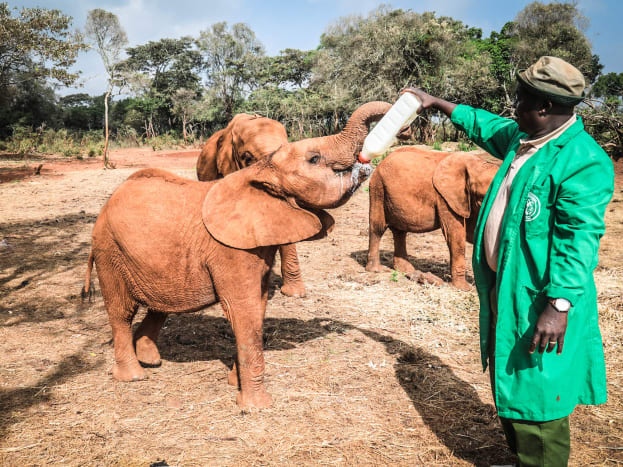
1 / 3
What do I do if a baby elephant approaches me?
Assuming you have not irresponsibly found yourself standing outside of your vehicle on safari, with a baby elephant and its herd behind it, then you should simply be calm. The infant elephants in our temporary care are inquisitive, some are cheeky and some are boisterous, just like human children. Their size also belies their strength, as even a months-old baby elephant is very strong and can easily knock a person over if they are playing. So it is always best to be standing up, on your feet and to be respectful of the elephant’s space. No shouting or screaming. Just be calm and respectful of the soul in front of you.
What are some fun facts about elephants?
Elephants sleep up to two hours a day. They can live to be 70 years old. The ears of an African elephant can reach up to five feet long. When flapped, they act as big fans, cooling the blood that runs close to the surface behind their ears. Elephants are also known for their incredible memory. Matriarchs will remember trails and watering holes and how to navigate the seasons, all knowledge handed down by their ancestors for generations, and knowledge vital for their survival.
How much can an adult elephant weigh? What about a baby elephant?
Adult elephants weight between 5,000 and 11,000 pounds. Infant elephants weigh up to 200 pounds at birth.
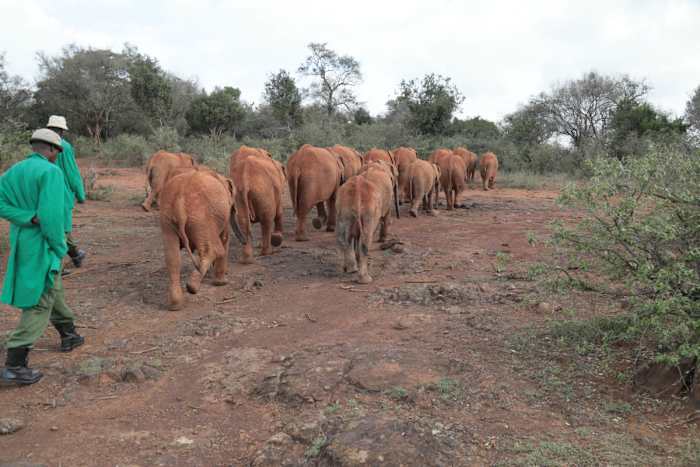
Courtesy of Sheldrick Wildlife Trust
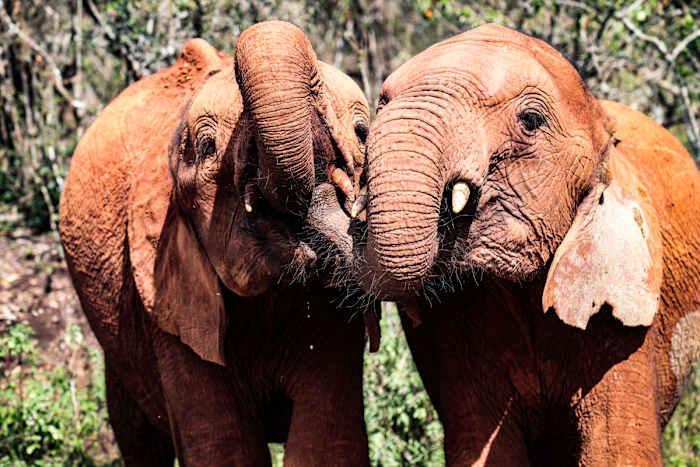
Courtesy of Sheldrick Wildlife Trust
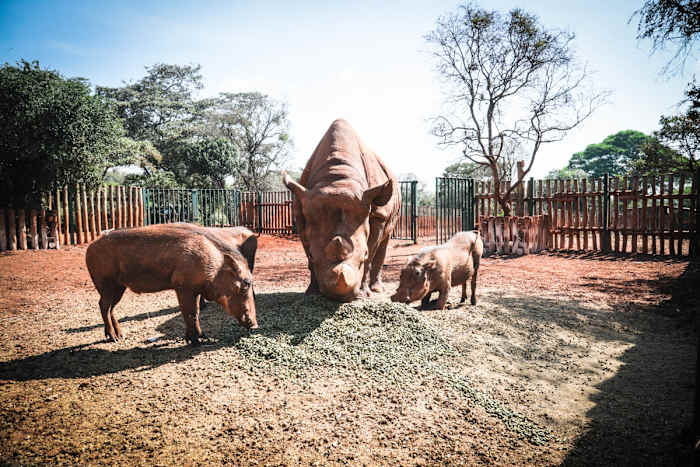
Courtesy of Sheldrick Wildlife Trust
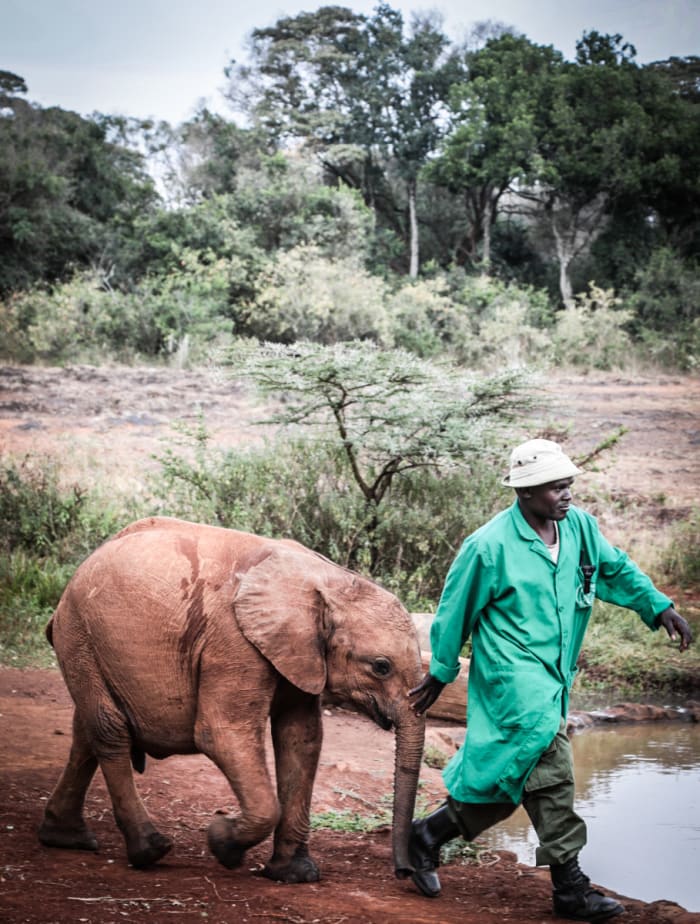
Courtesy of Sheldrick Wildlife Trust
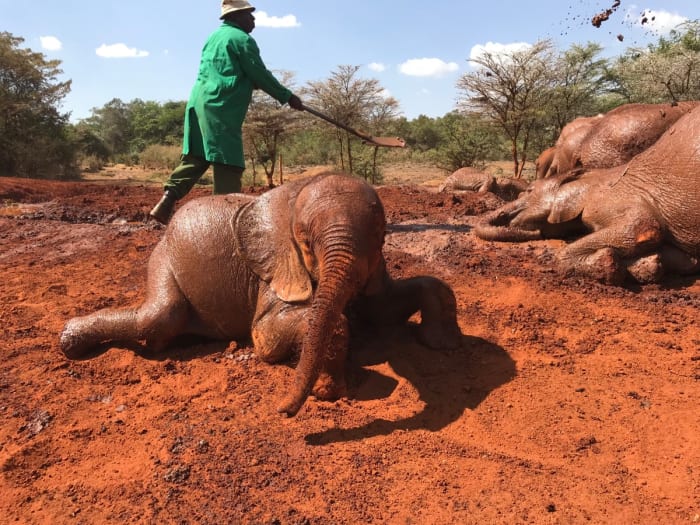
Courtesy of Sheldrick Wildlife Trust
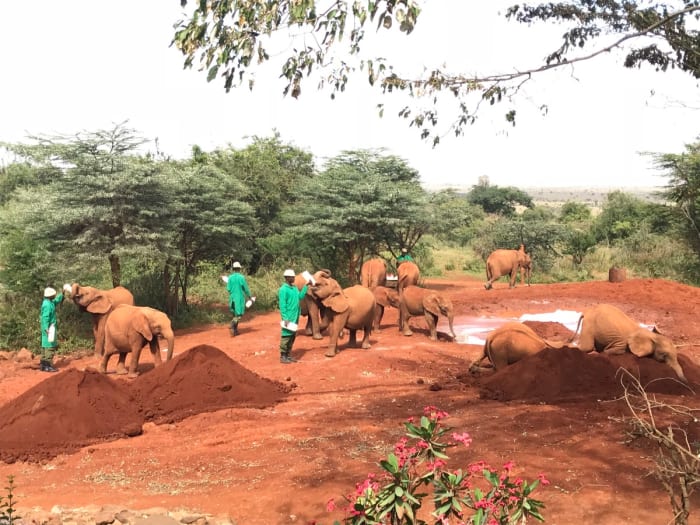
Courtesy of Sheldrick Wildlife Trust
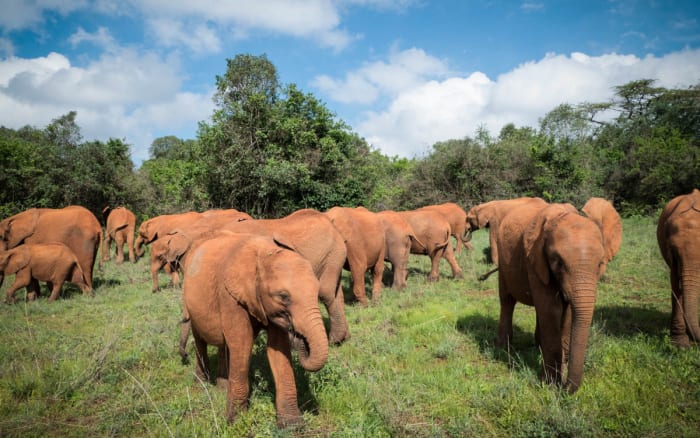
Courtesy of Sheldrick Wildlife Trust
